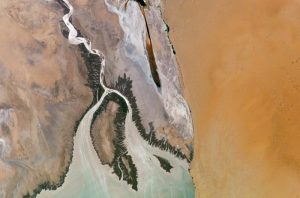Primary Functions
- Learn how Proctor & Gamble reduced their water risk at the Taicang plant in China by focusing on both the water intake and output.
Detailed Description
The Taicang plant in China is located in a water stressed area with strict water withdrawal and wastewater permit requirements, and the site requires large amounts of water to clean equipment. To ensure the longevity of operations in the region, enable compliance with permit requirements, and exceed P&G sustainability targets, Proctor & Gamble decided to reduce their water risk at the site by focusing on both the water intake and output.
The Taicang facility is located in a region where water stress is high, according to the World Resources Institute (WRI) Baseline Water Stress Score. Demanding permit requirements combined with retailer/consumer demands for a more flexible supply chain led the company to focus on reducing water use. Since cleaning and sanitization (C&S) activities were identified as the main contributors to overall wastewater discharge and chemical oxygen demand, the site decided to focus on reducing or completely eliminating (where possible) the impact of C&S on water input and output. A key objective was to meet the legal requirements to reuse the wastewater generated during C&S activities.
From the beginning, sustainability was at the core of the Taicang site development and operation. The design for the facility was inspired by the design of a traditional Chinese Garden, which includes a strong emphasis on water systems.
The first step was to develop and complete a detailed water map for the site to monitor project development and design. The second step was to reduce the quantity of water used at the site. To do this, the core process was designed for easier cleaning (e.g. flange to flange concept) and a new medium (steam) was used to decrease the amount of water needed to clean and sanitize. The third step was to develop an effective way to reuse the water and thus reduce water intake from the municipality.





